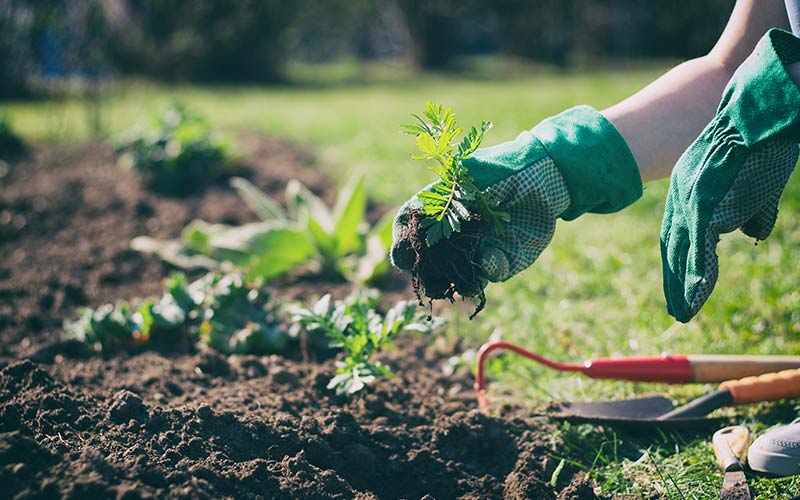Do you wish you could have fresh fruits or vegetables without needing to spend a lot or having to look for a farmer’s market? If you know others in your neighborhood who could benefit from being able to harvest their own produce, it may be time to start a community garden.
There are many ways a community garden can benefit an area or neighborhood besides providing fresh ingredients. Here’s an overview of why a community garden is worth investing in and how to start one in your neighborhood.
What Is a Community Garden?
A community garden is a semi-public to public space where those who live in the surrounding area or neighborhood grow fruits and vegetables. Some gardens may even include herbs and flowers, depending on the community’s decisions on what to grow.
How such a garden is set up varies from one community to another. One community garden could be in the yard of a public building or a common area in a neighborhood. There will be more than one household that helps look after the garden.
How Do You Start a Community Garden

If you’re convinced that a community garden is a worthy project, you’ll want to know just how to go about it. Here’s how to start a community garden in your neighborhood.
Step 1: Find Land
You need a spot for the garden before you start building it, so look around for available land with decent soil or enough ground for a number of raised beds. Optimally, it should be near water, too. Barring that, it shouldn’t be hard to bring a source of water to the plot.
If the area belongs to someone, make sure you get permission from the owner to build a community garden there. Don’t forget to check zoning laws in your area to make sure the garden doesn’t violate regulations.
Step 2: Get People Interested
You need to work with a team to build a community garden, so start by reaching out to those you feel will be interested.
You won’t need a big group to begin working on this project; just five people are enough to spread the word. If each person brings in another, you have ten people already! That’s enough to source gardening supplies and other materials and build the garden.
Step 3: Decide What to Plant
A community garden is supposed to be simple enough to maintain, even for those without a background in agriculture. This means choosing plants that will do well in your community’s climate. Don’t forget to factor in soil conditions and the available sunlight.
Consider your community’s needs, too, and add those to the list of plants to choose from. Then you can meet with neighbors to decide which ones to grow. Afterward, you can start looking for resources in earnest.
The best-case scenario would be a garden that produces something in early summer all the way through fall. This way, your community can look forward to harvesting something throughout the year.
Step 4: Prep, Plan, and Build
You need to prepare the plot before you can start planting, so decide how you’ll divide the site of the garden. Are you going to use raised beds, or will you just outline smaller plots where you’ll then grow different plants?
Once the plot is prepped, you can plan where to plant what. You’ll also need to consider protecting the space while making it accessible to volunteers.
Think of where you’ll each start the seedlings, too. Will you grow them at home before transferring them to the garden, or plant them immediately in the garden? Don’t forget about storage so you can keep gardening tools, fertilizer, and other items within easy reach.
Once your group decides on what to do, you can begin building the garden.
Step 5: Discuss Rules and Put Them in Writing
No matter the group’s size, make sure you outline responsibilities and rules. Even if you’ve already discussed them, you still need to put them in writing. This way, you and your neighbors will be sure to follow them.
Discuss who’ll take care of watering the garden and how often. Who’ll take care of fertilizing the plants and when? How will you handle harvesting and distributing the produce?
Determining these early on will help ensure that everyone involved knows their role and what’s expected of them. If needed, make copies of the rules and schedule and give one to each family that’s involved.
Step 6: Keep It Going
Once the garden starts growing, you need to keep it going. Encourage those involved to keep tending to the plants and maintain the garden’s appearance. You’ll also want to take any and all chances to promote the project and get more people involved.
For example, you can hold several farm-to-table dinners using the produce from the garden, or hold a community event near the garden so more people can take a look. The point is to keep generating interest in the project so that you don’t run out of volunteers to look after the garden.
Benefits of a Community Garden

No matter its size, a community garden has several benefits and is a great way to meet several needs at the same time. This ranges from improving access to food to reinforcing community relationships.
Here are some of the perks you can look forward to should you start a community garden.
-
Get to Know Your Neighbors
For many people, their neighbors are strangers. Starting a community garden, though, can be a good way to circumvent this, especially for those who live closest to the garden.
When you go to a community garden, you’re there to water the plants, fertilize them, or harvest fruits or vegetables. If you run into someone else, it’s safe to assume they’re there for the same reason. So it’s a good place to meet people you otherwise wouldn’t have known.
Besides making new friends, you’ll be able to work on your teamwork. Even in a voluntary activity like a community garden, you’re still working as a team toward a specific goal.
-
Learn New Things
Experienced gardeners that start community gardens are a fountain of interesting knowledge. So if you work with at least one when you start a community garden, count yourself lucky.
Plus, whenever you visit the garden, you can learn something new from your fellow gardeners. It could be how best to care for a certain plant or how to prepare a particular vegetable. You may even learn about garden landscaping, such as how to build a trellis for climbing plants.
-
Have a Natural Refuge
Now and again, we all need to take a break from our urban surroundings and all the technology we use every day. After all, going outdoors is good for both physical and mental health. And if there isn’t a nearby park, a community garden will work just as well.
Also, community gardens have been known to end up hosting a variety of lizards, birds, and insects. Seeing a lively ecosystem in action is bound to be interesting for both kids and adults.
Gardening and spending time in nature are both good for you. Gardening, especially, can help people recover from psychological issues and can provide emotional and mental benefits for seniors.
-
Get Moving
It’s also considered mild to moderate exercise, depending on the specific gardening activity. That means you can get some of your exercises from just helping out at a community garden.
-
Help with Food Provisions
Not all residents in a neighborhood have space on their properties to grow their own produce. If all families had no difficulties getting food, the lack of space wouldn’t be a problem. However, that’s not always the case.
If you start a community garden, it’s a great way to answer this particular need, especially in areas with limited access to affordable healthy food. Not having to worry about where you’ll get your next meal can do a lot to reduce stress.
Community Gardening: Nurturing a Greener Society

A community garden is largely a volunteer activity, but there’s no denying many people stand to gain from it. That’s why the more people are interested in the project, the better for the future of the said project.
If you want to start a community garden, remember it’s a worthwhile project, despite any difficulties your group may face. Just work as a team to overcome whatever obstacles you come across, and keep your end goal in mind.
You Can Also Read These:
- 15 Best Plants To Plant In Your Community Garden This Spring
- Organic Mulch vs Inorganic Mulch: What’s Best For Your Garden?
- Kitchen Gardens Are Back, Here’s How To Get Started




